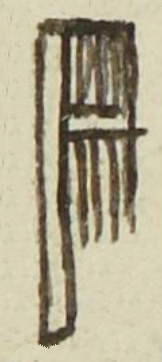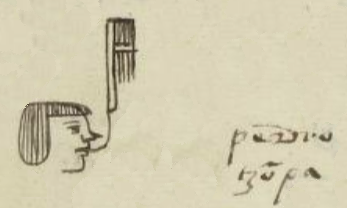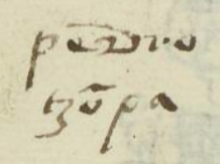Tzompan (MH627r)
This black-line drawing of the compound glyph for the personal name Tzompan ("Skull Rack" or "Tree") represents the name phonetically, using human hair (tzontli), tied in the middle and draped over a flag (panitl). Bundles of hair, blades of grass, sticks, etc., that were paid in tributes were typically tied in the middle such as this hair. Also, such things typically represented the number 400 (another reading for tzontli).
Stephanie Wood
In the Spanish colonial context, artists may have been reluctant to draw skull racks for fear of reprisals from the clergy. But this is only conjecture. Another personal name Tzompan also avoids drawing a skull rack (tzompantli), putting instead a tree (which is another translation for tzompantli). See below. Regardless, the name was still Tzompan in both cases.
Stephanie Wood
peDro
tzōpa
Pedro Tzompan
Stephanie Wood
1560
Jeff Haskett-Wood
flags, banners, banderas, sticks, palos, hair, pelos, skull racks, estantes de cráneos, tzompantli

tzon(tli), human hair, https://nahuatl.wired-humanities.org/content/tzontli
pan(itl), flag, banner, https://nahuatl.wired-humanities.org/content/panitl
tzompan(tli), skull rack or tree, https://nahuatl.wired-humanities.org/content/tzompantli
Estante de Cráneos
Stephanie Wood
Matrícula de Huexotzinco, folio 627r, World Digital Library, https://www.loc.gov/resource/gdcwdl.wdl_15282/?sp=336&st=image.
This manuscript is hosted by the Library of Congress and the World Digital Library; used here with the Creative Commons, “Attribution-NonCommercial-ShareAlike 3.0 License” (CC-BY-NC-SAq 3.0).










